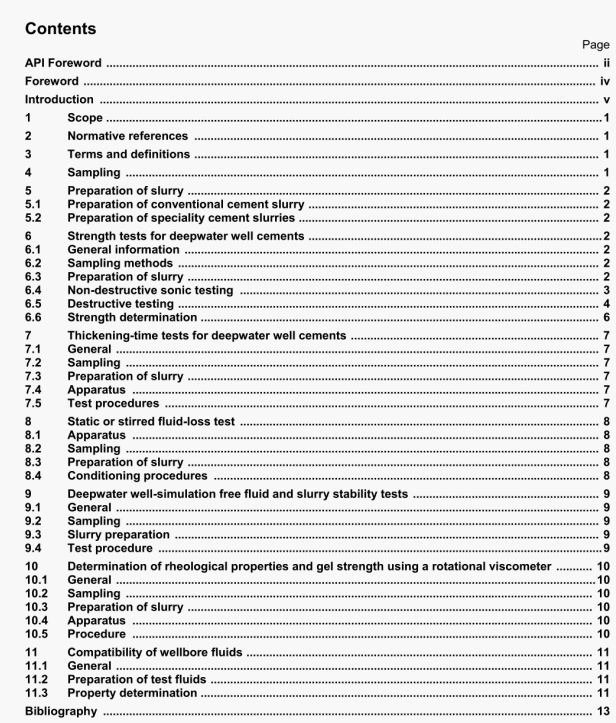API RP 10B-3:2004 pdf download.Recommended Practice on Testing of Deepwater Well Cement Formulations.
6.4 Non-destructive sonic testing
6.4.1 Apparatus for non-destructive testing
CAUTION — Care should be exercised to ensure that excess condensation caused by chilling the test apparatus does not cause electrical or other damage, which may create safety hazards.
The apparatus transmits a sonic signal through the cement, which can be correlated to cement properties such as the time and extent of strength development. In order to simulate conditions common to deepwater cementing, the apparatus shall possess sufficient cooling capacity to perform strength testing at temperatures anticipated in the wellbore
Excessive free fluid can impair the accuracy of the non-destructive sonic test, Free fluid in a slurry can inhibit contact with the top cell cover and affect the sonic signal being transmitted through the cement. Free fluid is determined according to the method provided In Clause 9. The test initiation temperature of the slurry should reflect as closely as possible the temperature conditions found during the field mixing operation.
6.4.1.1 Curing cell, in which the slurry temperature and pressure can be controlled according to the appropriate schedule.
A pressure vessel suitable for curing samples at a test temperature anticipated on the well and capable of maintaining pressure shall be used. As pressure is known to have an effect on strength development, the pressure appropriate for the placement conditions should be used for testing. Do not exceed the pressure limitations of the apparatus.
6.4.1.2 Temperature-measuring system, in accordance with 8.2.1 of ISO 10426-2:2003.
6.4.1.3 Sonic signal-measuring system, In accordance with 8.2.2 of ISO 10426-2:2003.
6.4.2 Procedure
Operate the apparatus according to the manufacturer’s instructions. To better simulate the temperature profile found in a deepwater well, ramp the curing cell temperature from surface mixing temperature to the desired test temperature according to a specific schedule determined by thermal simulation. Aitematively, chill the curing cell to the desired test temperature or below, before the slurry is placed into the curing cell, The slurry may also be conditioned In accordance with 6.4.3 or 6.4.4.
The test period begins with the recording of sonic data and the application of pressure and continues until the test is terminated. Begin recording the sonic data within 5 miii after the application of pressure. The pressure ramp should simulate the pressure conditions to which the cement shall be exposed during placement.
API RP 10B-3:2004 pdf download
